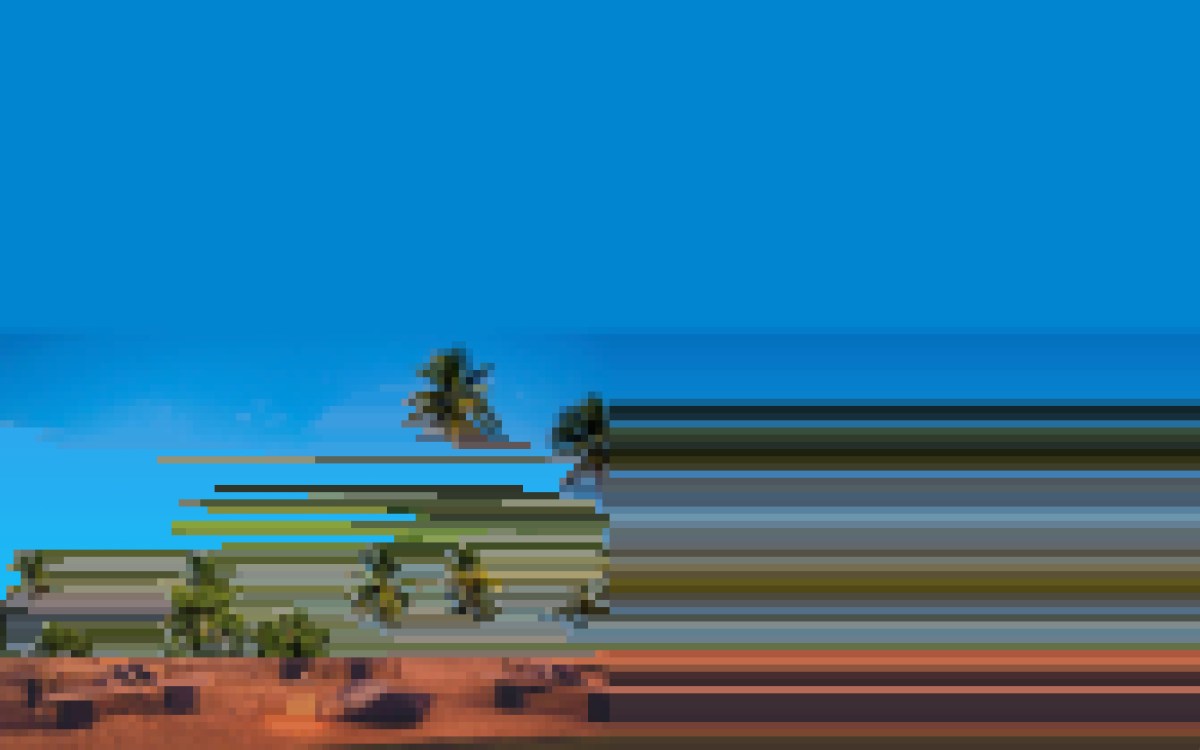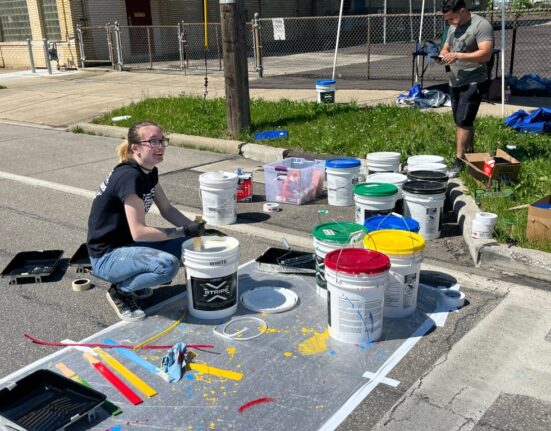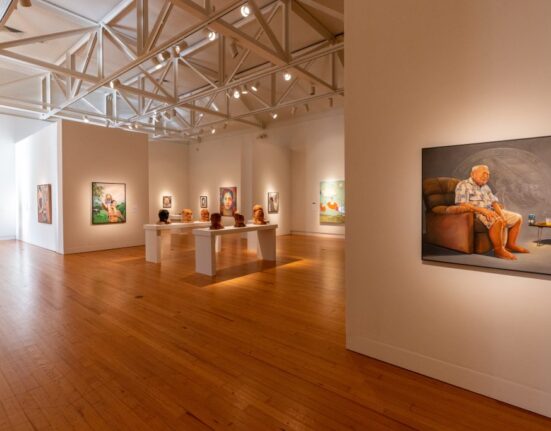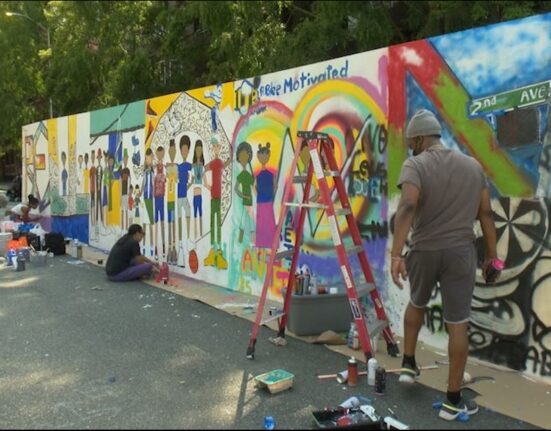A drone pours over a seaside golf course, while a line of cruise ships noses greedily towards port. Clear fluids fly into glass vials in an industrial lab, cars surge down palm-laced highways, and a white family in safari-wear stands exultant on a crystalline beach. Is this the visual identity of the modern Caribbean?
How different might it look if sighted from within the experiences of artists working on the ground? “Ultimately, it’s about: what is the vision for a place?” said Marina Reyes Franco, curator of Trópico es Político, a traveling exhibit currently on view at The Mead Art Museum at Amherst College until May 5.
Those oversaturated slices of Puerto Rico are both realistic and straight out of promotional videos. In the gallery, they show up in B-roll, a chilling video piece by Sofía Gallisá Muriente, with a voice-over composed of the statements from titillated investors at the 2016 Puerto Rico Investment Summit.
“In a democracy, you really need a crisis,” says one unidentified man, ostensibly about Puerto Rico’s 2014 debt crisis and the unique opportunity it presented to people looking to pick up a piece of paradise.
“If the vision is either tourism or banking practices to protect transnational capital, then we all lose something,” Franco said.
The show that Franco has curated features Caribbean artists making work in opposition to the literal and figurative strictures of tourist economies. The show uses the phrase “visitor economy regime” to identify both the tourists whose particular needs and wishes warp the place and the foreign investment world that extracts from it tax free.
Here in western Massachusetts, Holyoke has the largest Puerto Rican population, per-capita, of any city on the U.S. mainland. While people residing off-island in our region aren’t living under the same weight of cruise ship cabals, their presence here may still be intertwined with the visitor economy regime.
“We’re also indebted to the people that were pushed out of Puerto Rico or any place in the Caribbean,” Franco said. “One of the reasons they had to leave may be related to the visa economy as well, you know? It’s gentrification. It’s people not having many alternatives for developing careers.”
The works collected in this show offer various strategies to resist and question the regime’s forces. Some are highly material, like videos from nibia pastrana santiago and Viveca Vázquez that show performers in water and rely on the human body to refuse or reimagine the reality of an island. Santiago’s work, “Baliza,” plays from an old VCR on the floor and is accompanied by another by Vazquez.
Vázquez’s work, Las playas son nuestras, from 1989, is a piece of vintage ecofeminist and decolonial art that can be heard echoing around Puerto Rico today in the fight to halt the development and privatization of beaches across the island. Now, the slogan uniting that work is “las playas son del pueblo” — the beaches are for the people. In the Vázquez video, a group of women gather on a beach in Vieques and take off their work clothes. They enter the water and begin to transform into warrior fish to protect the coastline from the pollution and undetonated explosives left behind by the U.S. military’s 50+ years of using the island as target practice with bombs, napalm, uranium, and more.
Other works are more abstract, like the cryptographic script by Ricardo Cabret, which shows coastal images fading in and out in a mirage of large pixels. Puerto Rico in particular has been a favorite place of cryptocurrency miners and sellers, since residents are subject to a 0% tax on cryptocurrency.
“When I decided which kind of works to include, I was thinking about which strategies artists are using,” Franco told The Shoestring. The curator was especially interested in pieces that relied upon the same tools of the visitor economy regime, such as cryptocurrency and architectural plans, advertising campaigns and slogans. “How are artists using these tools? And how are they proposing other ways of using those devices?”
In the entrance to the show hangs a slogan-style banner reading “Our Island Here,” with an X superimposed over the O. This piece was created and used by santiago in the Baliza video installation wherein she dances with the banner and a ladder under the surface of a pool. The banner lets visitors know that they are entering contested territory: whose islands are these, the show asks, and how will these artists make the battles visible?
Sierra Dickey is a writer and educator living in western Mass. Find her on Twitter @dierrasickey.
The Shoestring is committed to bringing you ad-free content. We rely on readers to support our work! You can support independent news for Western Mass by visiting our Donate page.







